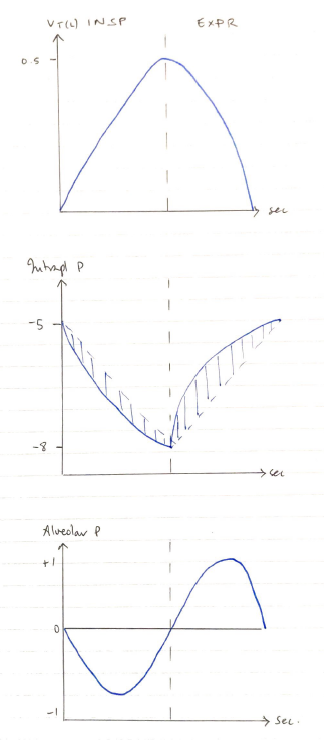F3i: Describe the inspiration & expiration process involving the chest wall, diaphragm, pleural & lung parenchyma
- Air moves from region of High P → Low P
- ∴requires a pressure gradient to be established b/w atmosphere & alveoli
Insp
- Diaphragm (phrenic n) descends
- External IC contract to increase AP & lateral diameters
- Collectively expand thoracic cavity which ↑its volume
BOYLE’S LAW: in a closed system where gas molecules number is constant, and at constant temp, pressure exerted by gas varies inversely with volume of gas
NB: ↑ vol gas = ↓ pressure gas exerts
- Lungs are not attached to CW, but ∆ vol acc to ∆ vol of thoracic cavity
- Pleural (visceral) covers lungs & pleura (parietal) lines thorax & coupled with thin fluid layer
∴ Intrapleural pressure ↓ from – 5 to –8cm H2O
- Alveolar P ↓ to subatmospheric
- ∴pressure gradient for flow of air into lungs
- Air flows in & lung volume ↑ until alveolar P rises to atmospheric (0 cmH2O)
- Then air flow ceases, as the P gradient no longer exists
Expr
- Cycle reverses
- Insp muscles relax
- Inward elastic recoil of lungs → deflate
- Airflow out of lungs ceases when alveolar P = atmos P
NOTE: At FRC, lungs have tendency to recoil inwards, chest has tendency to recoil outwards
NOTE 2: In order for lungs to expand, the insp muscles must overcome 2 key factors
